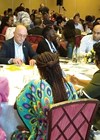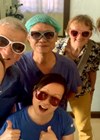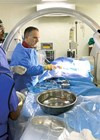Humanitarian
Developing eye health services in Malawi: a personal reflection
Dr Chinsisi Namate reflects on her first two years as a consultant ophthalmologist at the eye unit at Zomba Central Hospital, and how she has already successfully expanded eyecare services for southeast Malawi. The Lions Sight First Eye Hospital in...
A personal reflection: working at the International Centre for Eye Health from 2006–2024
I feel incredibly fortunate to have been working part-time at the International Centre for Eye Health (ICEH) [1] since 2006. Earlier in my career, the responsibilities of work and a growing family made this merely an aspiration, and apart from...
Primary eye health care in low- and middle-income countries
The need for eyecare services in low- and middle-income countries Recent global estimates (2020) suggest that there is more than a three-fold difference in the prevalence of all categories of visual loss (presenting visual acuity <6/12 in the better eye)...
Back-to-back congresses in Africa highlight international collaboration to advance eye health
The ISOO Africa 2023 Congress The first International Society of Ocular Oncology (ISOO) [1] conference to be held in Africa took place in Mombasa, Kenya, from 21-23 August 2023. Participants came from all over Africa, as well as the US,...
CALL TO ACTION: Help the Ridley Eye Foundation ‘reach more of the unreachable’ in the Himalayas
On the 29 November 1949, Harold Ridley carried out the first implant of an intraocular lens (IoL). This was the first major breakthrough in the cure of cataract blindness since Jacques Daviel conducted the first extra-capsular extraction 198 years earlier....
The International Centre for Eye Health: weaving the global threads together
The VISION 2020 LINKS & Networks Programme has been writing regular articles in Eye News about its capacity-strengthening activities in low- and middle-income countries (LMICs) for more than a decade. This, the first International Issue, is a landmark for Eye...
Across the globe and into the world of international eye grading
Decades have passed and the influence of analysing fundus images by grading consultants and retinal image specialists has grown worldwide. Their job is to specialise in assessing hundreds of diagnosed eye disease disorders and to read thousands of eye images,...
Strengthening diabetic retinopathy services in Nigeria through DR-NET – from grass roots to national policy development
This is the third article in a series (see Part 1 and Part 2) reflecting on how shared learning via networks of UK and international eye health professionals is contributing to reducing unnecessary blindness in Nigeria. Earlier articles focused on...
CALL TO ACTION: Ophthalmology on Myanmar / Thailand border: do you have any redundant kit?
In 1990, the late Doctor Frank Green, a consultant ophthalmologist in Aberdeen, along with Doctor Phillip Ambler, a GP with ophthalmic training, responded to an invitation to provide ophthalmic care for Karen refugees on the northern and eastern Myanmar borders....
Enhancing glaucoma awareness and management in Nigeria – from grass roots to national policy development
This is the second in a series (see Part 1 here) of three articles about strengthening eye health services in Nigeria through collaboration with the LINKS and Networks run at the International Centre for Eye Health, LSHTM. This article highlights...
Establishing an intra-arterial chemotherapy service for children with retinoblastoma in Nigeria for the first time
This is the first in a series of three articles (see Part 2 here) about strengthening eye health services in Nigeria through collaboration with the LINKS and Networks run at the International Centre for Eye Health, London School of Hygiene...
Capacity-strengthening for diabetic retinopathy services in low- and middle-income countries
Introduction DR-NET eye health professionals in low- and middle-income countries (LMICs) have, since 2015, been able to access training in diabetic retinopathy (DR) grading provided by Gloucestershire Retinal Education Group (GREG). GREG, led by Professor Peter Scanlon and based at...

















